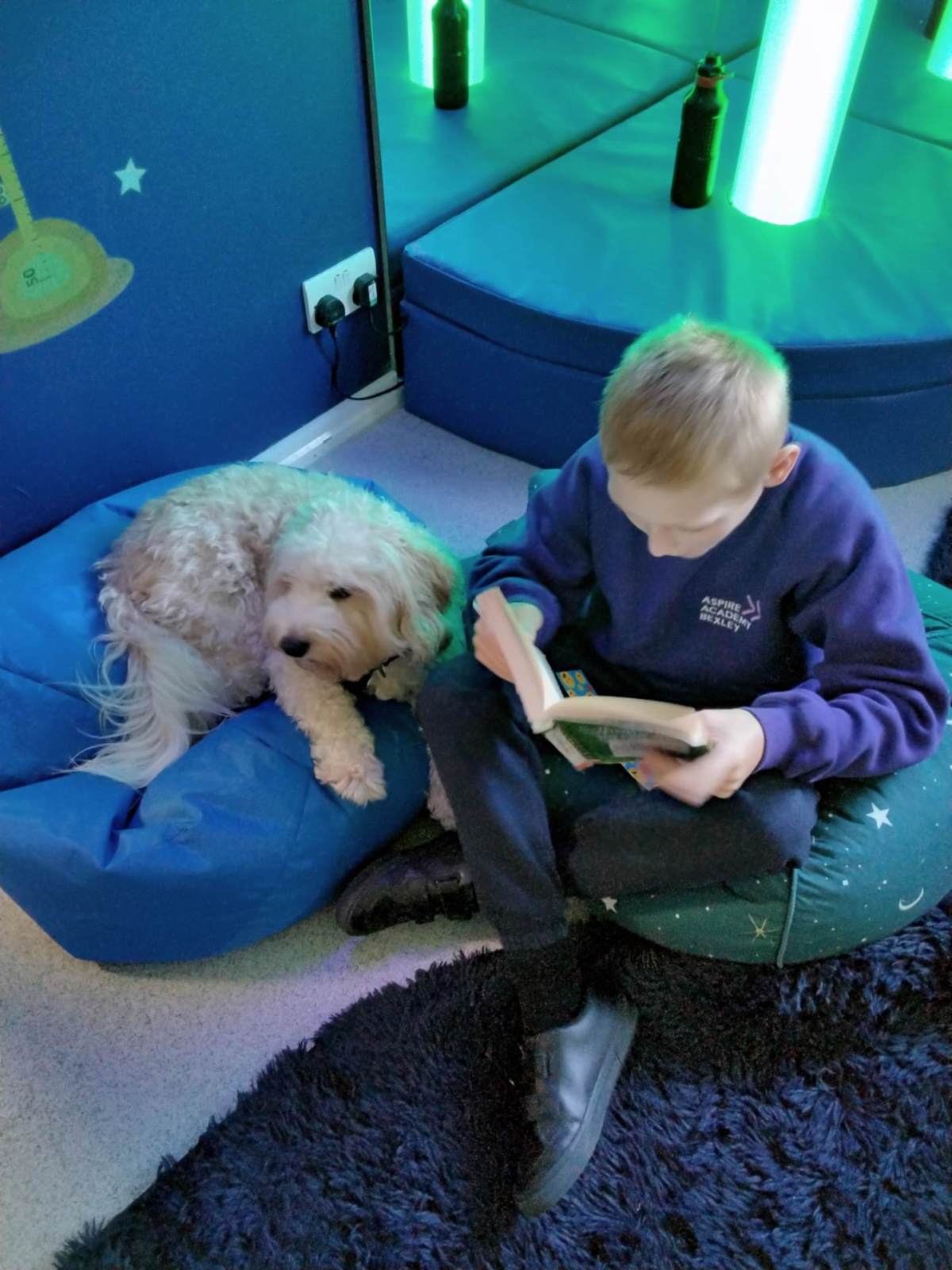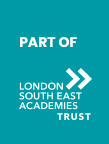English
Intent
At Aspire we are dedicated to teaching our pupils to become competent readers and writers, to develop a love for reading, a passion for discovery, and a confidence to explore their imagination and be able to show this in their writing.
Our intent is for all pupils to develop an expertise in reading, writing and spoken language. One of our priorities is helping children read and develop vital comprehension skills. We recognise the importance of nurturing a culture where children take pride in their writing, can write clearly and accurately and adapt their language and style for a range of contexts. We want to inspire children to be confident in the art of speaking and listening and who can use discussion to communicate and further their learning.
We believe that children need to develop a secure knowledge-base in Literacy, which follows a clear pathway of progression as they advance through the primary curriculum, always learning and remembering more. Our practice is underpinned by our commitment to the inclusion of all pupils ensuring they are given opportunities to develop their knowledge, understanding and use of spoken and written English, regardless of their starting point.
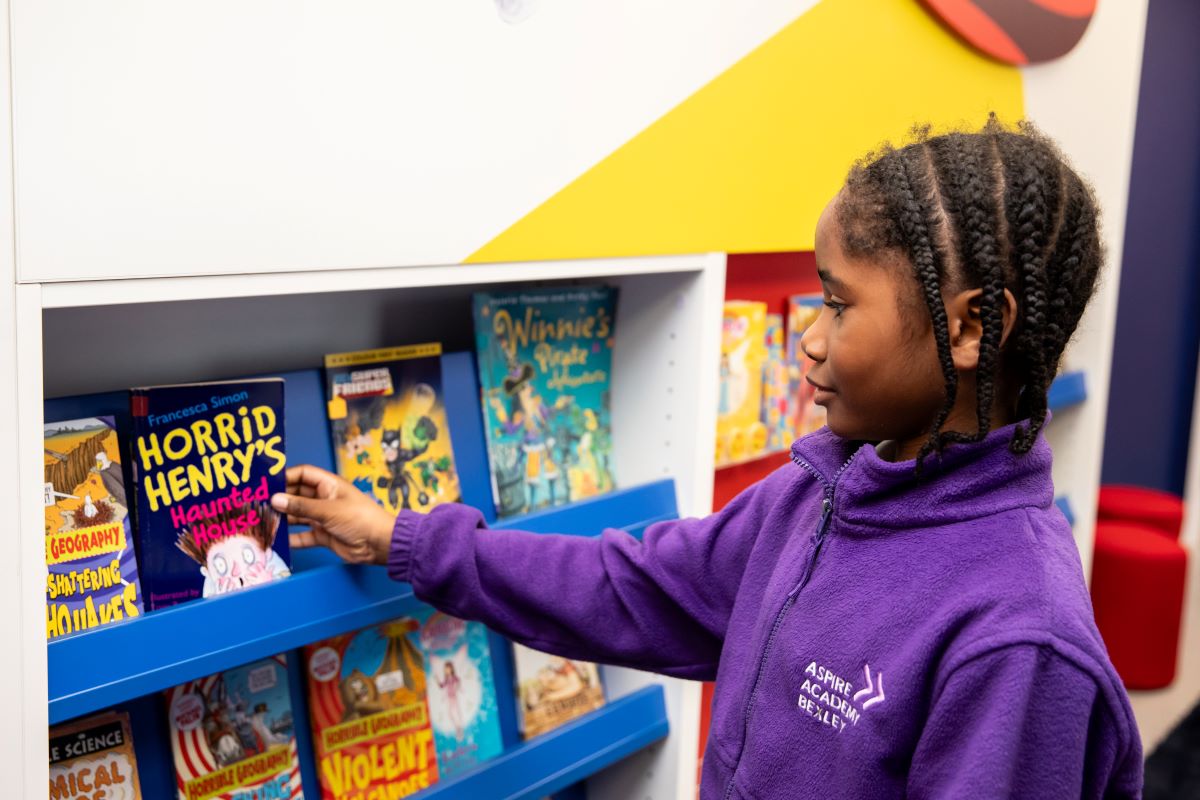
Implementation
We will support all children to learn to read through clear leadership; consistent teaching and learning approaches supported by regular monitoring and assessment. Teachers, with support from the English Lead and Senior Leadership Team, draw upon careful observations and continuous assessment (every half term) to ensure children are challenged and to identify children who may need additional support or further challenge.
Pupils at Aspire access the English lessons appropriate to their current stage of learning, regardless of their age. This enables them to build confidence and feel free to take risks in their learning alongside peers who are at the same stage as them. Our pupils want to become confident, independent writers and readers, and so work hard to make progress and show enthusiasm in their lessons.
At Aspire, the systematic teaching of phonics is a high priority for all pupils. We use the validated synthetic phonics scheme, Read Write Inc. (RWI) phonics, to teach our pupils to read and write. This scheme covers the National Curriculum objectives for Key stage 1. We make sure that our pupils can confidently read the last set of phonics stories before they progress onto English lessons following ‘The Write Stuff’ system, which covers the National Curriculum skills from Year 2 to Year 6. These English lessons take place 4 times a week, on Mondays, Wednesdays, Thursdays and Fridays.
Every Tuesday, our pupils have their English lesson in the school library. This is an opportunity to explore a love of reading, sharing texts as a class, making recommendations to peers and reading 1:1 with adults. In these sessions, they have the opportunity to enjoy a range of different genres and develop a love of reading. Each child leaves the library with a book to read or share at home.
All children read aloud during phonics and read at least once more per week with a teacher or teaching assistant using books that closely match their phonic/reading ability. Pupils making below expected progress are also targeted for additional one-one reading time. We use Story Zoo as a fun and interactive platform for reading and celebrating reading regularly.
Beyond our English schemes, pupils have opportunities to apply their reading, writing and spoken language skills in a range of contexts, exploring real life experiences and topic-based learning through a range of high-quality texts, regular ‘Big Write’ days and our engaging foundation curriculum. We aim to make our writing opportunities exciting and relevant to our pupils, giving them an opportunity to make links between different skills, contexts and consider the use of writing beyond a classroom.
Pupils are further supported to develop a love of reading and writing through our ongoing celebration of their work: colourful and eye-catching corridor displays showcase their writing and exploration of authors & texts; classroom working walls support pupils with their current learning displaying the appropriate speed sounds chart, word of the week, writing toolkit and, where appropriate, key vocabulary; certificates are awarded in celebration assemblies for achievements in English learning. Pupils are assessed on a termly basis for reading and writing, and half-termly in phonics. Pupil progress meetings are then held termly to identify pupils who have not made the expected progress and targeted interventions are then put in place.
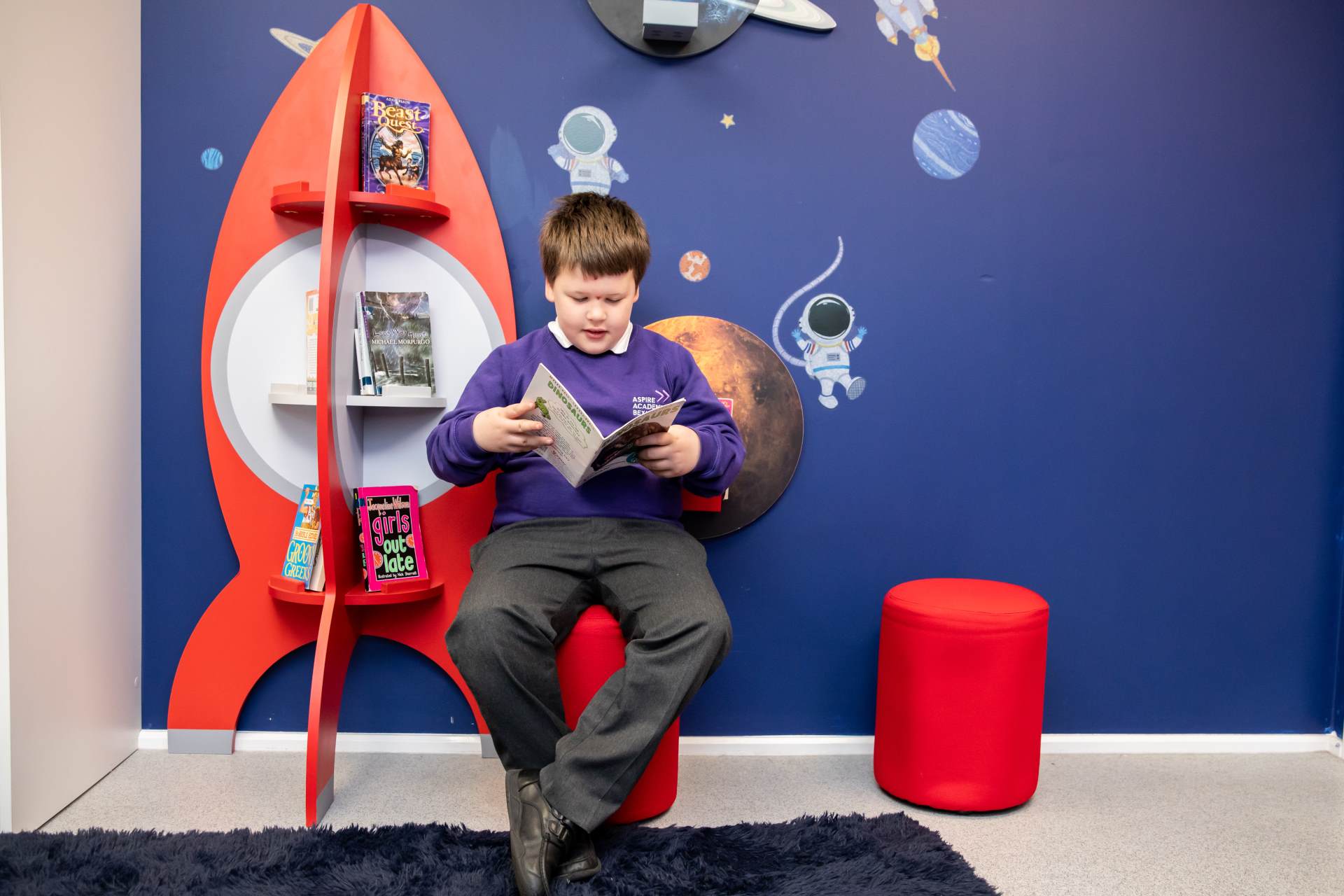
Impact
The intended impact of the English curriculum is that:
in reading, children will:
- Read fluently, demonstrating confidence and understanding
- Read for pleasure and enjoyment
- Demonstrate a broad and adventurous vocabulary and show an interest in words and their meanings
- Express their ideas, views and opinions about a wide range of topics and texts
in writing, children will be able to:
- Use a range of effective spelling strategies, including phonetically plausible attempts at unknown words
- Apply their skills across a range of genres and be able to apply characteristic features of texts to their own writing
- Have a good knowledge of how to adapt their writing based on the context and audience
- Use technical and rich vocabulary
- Apply appropriate grammatical features
- Write at length to explore and develop their own ideas
- Demonstrate their creativity and imagination within writing
- Use a clear, legible handwriting style that promotes fluency and secures high standards of presentation
As a result of our ambitious English curriculum and our consistent delivery of outstanding English teaching, pupils at Aspire will learn more and remember more. We expect our pupils to make at least one year’s academic progress per school year from their starting point. All pupils are expected to achieve or exceed this expectation.
How We Support SEMH Learners in English
At Aspire Academy, we believe every child deserves the opportunity to thrive in English, regardless of their emotional or behavioural challenges. Our English curriculum is designed to be flexible, engaging, and trauma-informed, ensuring that all learners feel safe, valued, and motivated.
Key Strategies We Use:
Personalised Learning
- Differentiated tasks tailored to individual reading and writing levels
- Use of visual aids, sentence starters, and writing frames
- One-to-one or small group interventions for targeted support
Therapeutic Teaching Environment
- Calm, low-stimulus classrooms with clear routines
- Emotionally literate teaching staff trained in de-escalation and trauma-informed practice
- Opportunities for movement breaks and sensory regulation during lessons
Building Confidence Through Success
- Emphasis on effort and progress, not just outcomes
- Regular praise, rewards, and celebration of achievements
- Opportunities to share work in a safe and supportive setting
- Language-Rich Classrooms
- Daily exposure to high-quality texts and vocabulary
- Learning walls to reinforce consolidation of learning
Reading for Wellbeing
- Access to a wide range of books that reflect pupils’ interests and experiences
- Quiet reading spaces for relaxation and emotional regulation
- Reading aloud sessions to model fluency and expression
Intervention & Support Programs
- Phonics catch-up using Read Write Inc. or similar schemes
- Speech and language support in collaboration with therapists
- Beat Dyslexia programme: A structured, multi-sensory intervention designed to support pupils with dyslexic tendencies, focusing on phonological awareness, memory, sequencing, and spelling through engaging, step-by-step activities.
Writing At Aspire
At Aspire Academy Bexley, writing development is carefully structured to build confidence, creativity, and technical skill. Pupils begin by learning to write through Read Write Inc. Phonics, where they are taught to form letters, spell words phonetically, and construct simple sentences. This foundation ensures that children gain the essential skills needed to express themselves clearly and accurately.
As pupils become more confident writers, they progress to The Write Stuff by Jane Considine. This approach supports children in developing rich vocabulary, sentence variety, and cohesive writing through engaging, high-quality texts. Lessons are carefully modelled and scaffolded, enabling all pupils to write with purpose and imagination across a range of genres.
What is 'The Write Stuff'?
✨ What is The Write Stuff?
The Write Stuff is a fun and creative way that children learn to write in school. It helps them build exciting sentences, use their imagination, and become confident writers — step by step!
How Does It Work?
Jane Considine’s method uses something called the "Writing Rainbow". Think of it like a rainbow full of ideas to help children write amazing stories and information.
🌈 The Writing Rainbow Has 3 Parts:
- Fantastics – Ideas and imagination 💡
These help children think about what they want to write (e.g., what they see, feel, or hear).
- Grammaristics – Grammar made simple ✍️
These help children use the right words, punctuation, and sentence types. - Boomtastics – Wow words and effects 💥
These help children make their writing exciting and powerful!
🧠 What Happens in a Lesson?
Each lesson is like a mini adventure! Here’s what your child might do:
- Watch a short video or look at a picture 🎬🖼️
This gets their imagination going.
- Talk about ideas with the class 🗣️
They share thoughts and learn new words.
- Write one super sentence at a time ✨
They build their writing slowly, with help from the teacher.
- Celebrate their writing! 🎉
Children feel proud of what they’ve created.
💬 Why Is This Good for Your Child?
- Builds confidence
- Improves vocabulary
- Makes writing fun and creative
- Helps them understand grammar without stress
👨👩👧 How Can You Help at Home?
Even if reading and writing isn’t easy for you, you can still help:
- Ask your child what they wrote today
- Let them read their writing to you
- Praise their ideas and effort
- Encourage drawing and writing at home
Using StoryZoo

Using StoryZoo at Home: A Guide for Parents
All pupils at Aspire Academy have their own StoryZoo login.
You can use this platform to log all reading at home and access a wide range of engaging eBooks.
Step-by-Step: Logging Reading with Your Child
- Go to www.storyzoo.org on a tablet, phone, or computer.
- Click “Log In” (top right corner).
- Enter your child’s login details (provided by the school).
- Once logged in, go to the Reading Record section.
- After reading a book (either on StoryZoo or a physical book at home):
- Click “Add Reading Entry”.
- Fill in the book title, date, and a short comment (e.g. “Read with Mum – enjoyed the story!”).
- Click Submit.
- Teachers can see these entries and celebrate your child’s reading progress in school!
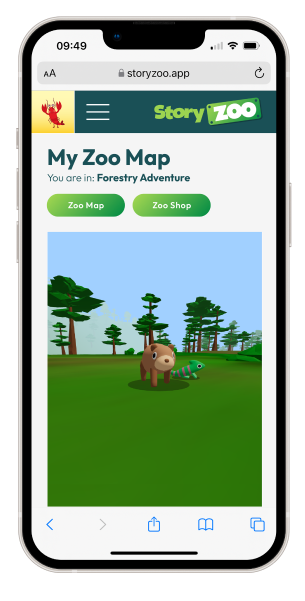
How to Access Books on StoryZoo
- After logging in, go to the Library tab.
- Browse or search for books by:
- Reading level
- Genre (e.g. adventure, fairy tales, history)
- Phonics stage
- Click on a book cover to start reading.
- Many books include audio narration and interactive features to support early readers.
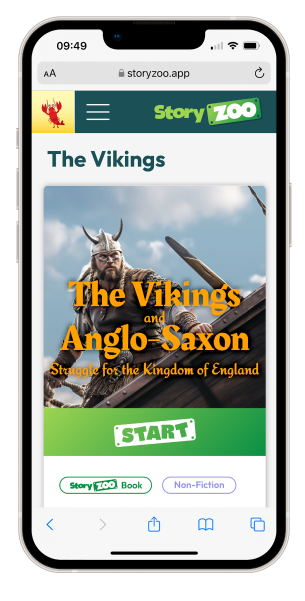
Doodle Learning
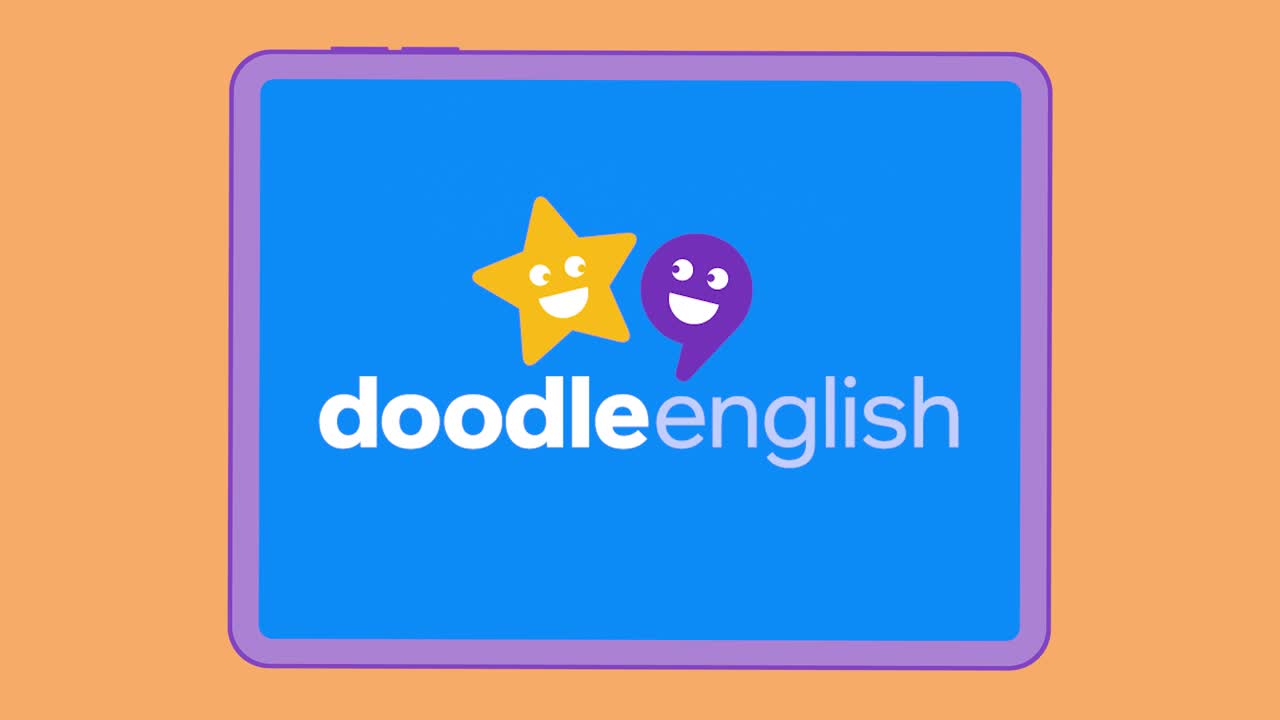 Support Your Child’s Reading and Writing at Home with DoodleEnglish and DoodleSpell!
Support Your Child’s Reading and Writing at Home with DoodleEnglish and DoodleSpell!
DoodleEnglish and DoodleSpell are fun, interactive apps designed to boost your child’s confidence in reading, writing, and spelling. Just a few minutes of daily use can make a big difference, and the best part is, your child already has a login card to get started!
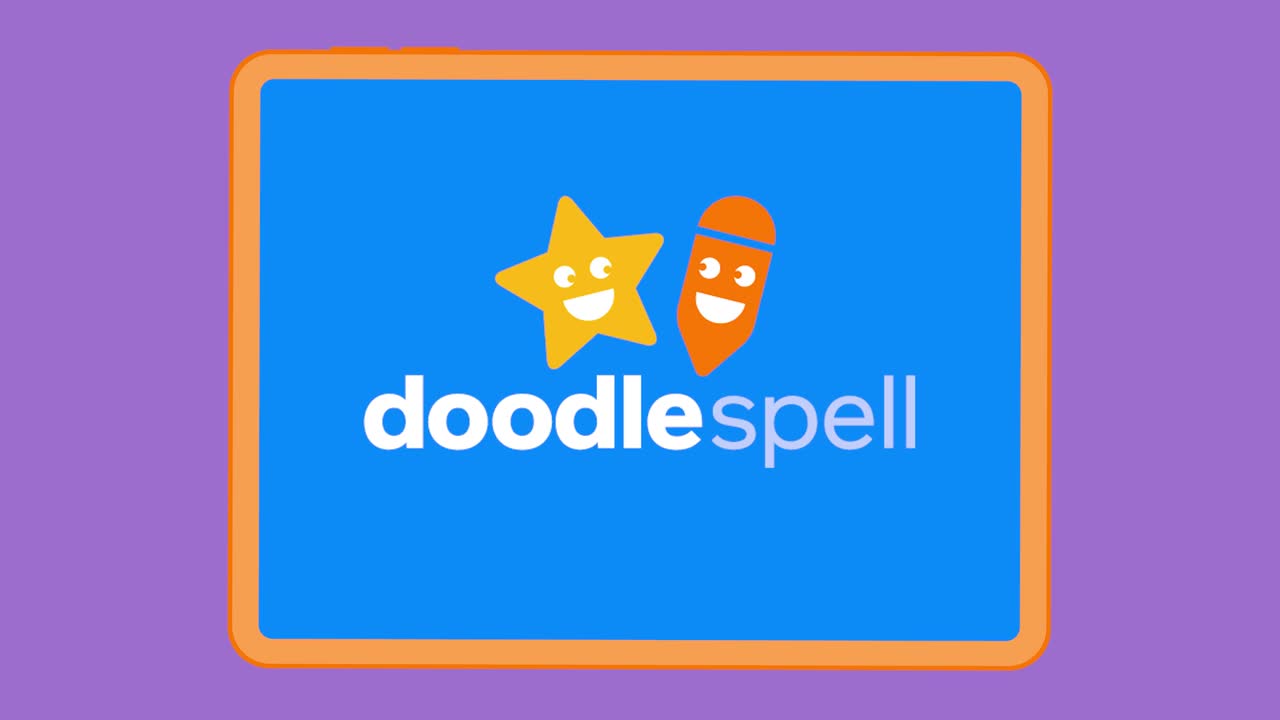
If you need a login card or have any questions, please speak to your child’s teacher. Let’s work together to make learning enjoyable and effective!
Oxford Owl - Free eBooks
Why not head to Oxford Owl to read a free eBook. You will need to create a free account to start, then you can find suitable books using the link below or searching under ‘Levels’ for ‘Read Write Inc Levels’ and choosing a colour from below.
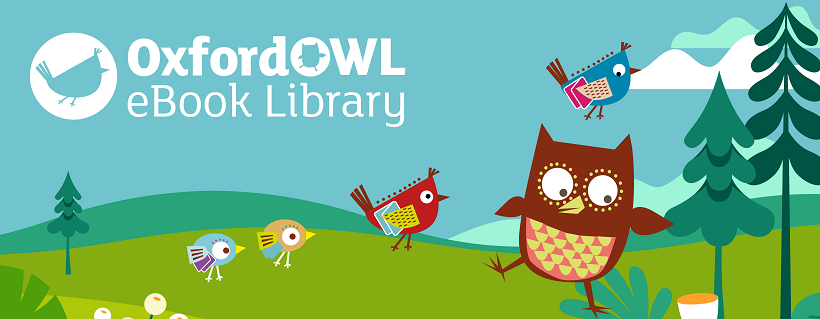 Not sure which books your child should be reading - start with Sounds Blending and work your way down. Your child should be able to confidently sound out and blend each word. You should read each book at least 3 times, as they would at school: once to read the words correctly, a second time with more fluency, and a third time in a ‘storyteller voice’ that shows their understanding.
Not sure which books your child should be reading - start with Sounds Blending and work your way down. Your child should be able to confidently sound out and blend each word. You should read each book at least 3 times, as they would at school: once to read the words correctly, a second time with more fluency, and a third time in a ‘storyteller voice’ that shows their understanding.
Phonics Play
There are some free games and activities to support practicing your Phonics Skills, including recognising those tricky red words on the Phonics Play website.
Tips for Reading at Home
1.Choose a quiet time – set time aside with no distractions for 10-15 minutes each day.
2. Be positive – boost your child’s achievement and give praise. Using books that may seem easy builds confidence rather than a book which has too many unknown words; building self-esteem is important when creating fluent and confident readers.
3. Read for variety – children need to experience putting their skills into practice so let them read the weekly shopping list, ingredients for a recipe, the football scores or comics. If it has words, your child can practice reading it!
4. Use the Parent guide to Read Write Inc. Phonics | Oxford Owl , where you will discover more top tips to support your child at home, including parent tutorial videos, the ‘Sound Pronunciation Guide’ and more ideas and resources to support your child.
5. Remember to be a good role model by reading for pleasure yourself.
6. Visit your local library to borrow exciting new books, comics and other reading materials- you can find your nearest library at this Local library services government website, just by entering your postcode.
English Scheme of Work
English Scheme of WorkAspire Reading Spine